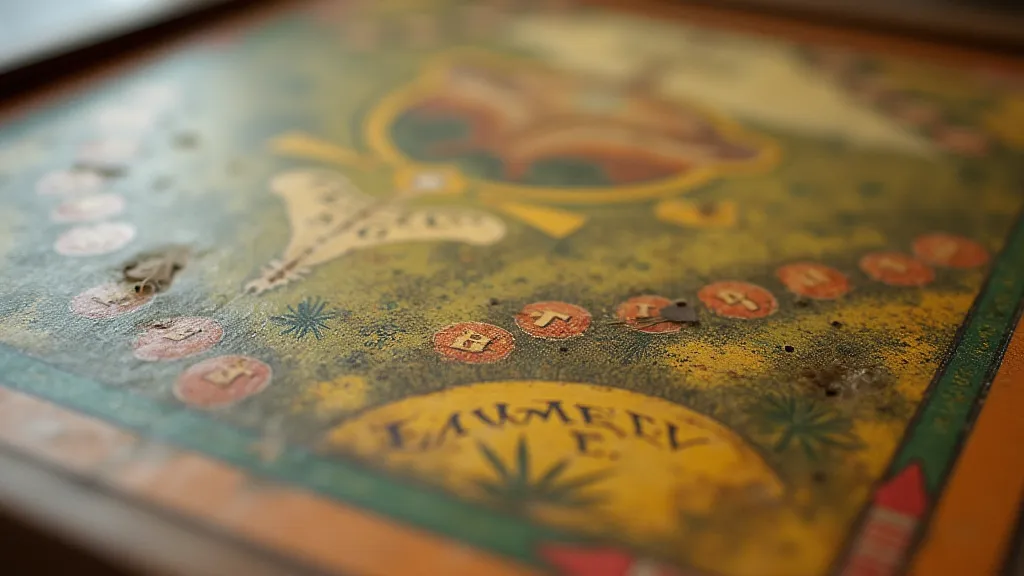Dust & Echoes: The Forgotten Architects of Family Game Night
There’s a peculiar magic in holding a vintage board game. It’s more than just cardboard and painted wood; it’s a portal to a time when family gatherings revolved around something tangible, something requiring imagination and shared effort. We often romanticize these moments, picturing warm fireplaces and the laughter of loved ones. But behind that comforting nostalgia lies a surprisingly complex history, a story of ambition, innovation, and the forgotten architects of family game night.
My own introduction to this world was through my grandfather’s attic. Sunlight struggled through dusty panes, illuminating forgotten treasures. Amongst the chipped porcelain dolls and moth-eaten coats lay a battered copy of "The Mansion of Happiness," published in 1843. It wasn’t shiny or colorful like the games I knew; its hand-painted board was faded, the wooden pieces worn smooth by countless turns. Yet, there was an undeniable allure. It felt… real. This wasn’t just entertainment; it was a fragment of someone else's history, a connection to generations past.

The Rise of the Game Makers: More Than Just Amusement
Before mass production, board game creation was a cottage industry, largely driven by printers and publishers looking for a new revenue stream. Initially, games were often morality tales disguised as amusement. "The Mansion of Happiness," for example, wasn't just about reaching the mansion; it was a didactic journey through virtue and vice, rewarding piety and punishing sin. The creators weren't solely motivated by entertainment; they were shaping values, subtly influencing behavior through a medium perceived as harmless fun. Consider the language used in these early games, how it contributes to the larger tapestry of American vernacular and leisure—a topic explored further in "The Lexicon of Leisure: How Vintage Board Games Shaped American Vernacular".
The mid-19th century saw a gradual shift. Figures like Milton Bradley and Charles Darrow, names synonymous with modern board gaming, emerged. However, their stories are often simplified. Bradley, for instance, began his career printing lithographs, a skill crucial to the burgeoning board game market. He recognized the potential for mass-produced games, a radical concept at the time. His early games, often adapted from existing European models, laid the groundwork for an industry we now take for granted. These weren't just skilled printers; they were entrepreneurs, marketeers, and pioneers in a nascent entertainment sector.
Craftsmanship and Materials: A Window into a Bygone Era
Examining vintage board games is akin to holding a miniature museum piece. The quality of materials and craftsmanship is often astonishing. Early games frequently utilized lithography, a printing process that allowed for vibrant, detailed images on cardboard. However, the process was labor-intensive and expensive, resulting in a level of artistic detail rarely seen in modern mass-produced games. Look closely at the wood-cut pieces; they’ve been meticulously carved, often with a surprising degree of character. The wear and tear you see isn’t just damage; it’s a testament to the countless hours of enjoyment they’re provided. The subtleties of these artifacts, even the seemingly insignificant game pieces, offer a fascinating look into human experience—a concept explored in greater depth in "Beyond the Box: The Phenomenology of Vintage Game Pieces."
The use of materials also speaks volumes about the era. Ivory, bone, and hardwoods were common for game pieces, reflecting the relatively easy access to these resources. The packaging, too, was often beautifully crafted, utilizing fabrics like velvet and silk – luxuries that underscored the game's value and perceived sophistication. Even the boxes themselves, often elaborately decorated, were works of art.
The Evolution of Gameplay: From Moral Lessons to Strategic Challenges
The games themselves underwent a significant evolution. Early games were heavily didactic, emphasizing moral instruction and societal values. As the 19th century progressed, however, gameplay became more complex, incorporating elements of strategy and competition. "The Checkered Game of Life," introduced in 1860, marked a crucial turning point. While still retaining a moralistic undertone, it introduced the concept of choices and consequences, a precursor to modern simulation games.
The rise of strategic games like chess and checkers also influenced board game design. These classic games provided a framework for creating more challenging and engaging experiences, leading to the development of games that required planning, foresight, and a degree of cunning. The shift from explicit moral instruction to more nuanced gameplay wasn’t arbitrary; it reflected broader changes in how narratives were constructed and understood. Examining the wording and sequencing within these instructions reveals a silent narrative, subtly shaping player expectations and guiding interaction, as discussed further in "The Silent Narrative: Decoding the Hidden Meanings in Vintage Game Instructions."

The Rise of Monopoly: A Case Study in Commercial Triumph
Of all the board games from this era, few have achieved the iconic status of Monopoly. Its origins, however, are far more complex than most realize. Initially conceived as a critique of unchecked capitalism, the game’s subsequent commercialization and evolution tell a fascinating story of adaptation and triumph. The game's journey, from its anti-capitalist roots to its place as a cornerstone of American culture, is a complex tale of ambition and circumstance. It’s a story of how a simple idea, born of critique, could be transformed into an empire, a trajectory that reveals the intricate forces at play in the world of commerce. The story behind Monopoly's success, and the complex legal battles surrounding its creation, deserves a dedicated exploration, and indeed, it has been meticulously documented in "The Cartographer's Secret: Mapping the Rise of Monopoly's Empire."
Preservation and Interpretation: Maintaining a Tangible Legacy
For collectors and enthusiasts, the focus isn’s solely on acquisition, but also on preservation. These games are more than mere objects; they’re windows into the past, tangible links to a bygone era. Understanding the context in which these games were played, the values they represented, and the craftsmanship that went into their creation requires more than just a casual glance. It demands a commitment to interpreting their significance, to appreciating their place in the larger narrative of American history and culture.
The Enduring Appeal: More Than Just a Game
Vintage board games possess a unique appeal that transcends mere entertainment. They evoke a sense of nostalgia, conjuring images of simpler times and closer family connections. They offer a tangible connection to the past, allowing us to experience a world that existed before the digital age. But more importantly, they remind us of the enduring power of human creativity and ingenuity. The ingenuity is not just in the creation of the game mechanics, but in the way they seamlessly blended entertainment with education, values, and a profound understanding of human psychology.

Vintage board games are more than just nostalgic relics; they are tangible artifacts of a bygone era. They offer a unique window into the social, economic, and cultural forces that shaped the world we inhabit. Recognizing the ambition and innovation of those early game makers—the printers, the publishers, the artists—allows us to appreciate the complexity and richness of their contributions. They weren't just creating entertainment; they were crafting experiences, shaping values, and leaving behind a legacy of laughter and shared memories. The next time you handle a vintage board game, take a moment to consider the forgotten architects of family game night, the individuals who paved the way for the games we enjoy today. They were, in their own way, the pioneers of play. The enduring popularity of these games speaks to a deep-seated human desire for connection, challenge, and a sense of shared experience, qualities that continue to resonate with us today.





